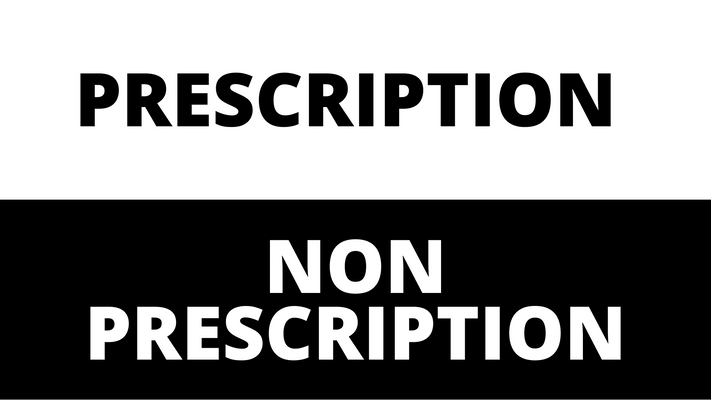Glasses have become an essential accessory for millions of people worldwide, for vision correction or as a fashion statement. However, glasses are not all the same, and choosing the right glasses for you, can be overwhelming.
In this article, we will explore the different types of glasses available in the market, their features, and their applications.
In this article, we will explore the different types of glasses available in the market, their features, and their applications.
Prescription Glasses
These are glasses with lenses customized to correct refractive errors in the eyes. They help you see better and are prescribed by an Optometrist after an eye test.
Refractive errors are common eye conditions that affect how light enters and focuses on the eyes, causing blurry vision.
Prescription glasses are available in different types, including:
Single Vision Glasses

These are the most basic type of prescription glasses and have lenses with uniform power throughout the lens.
They are suitable for correcting nearsightedness, farsightedness, or astigmatism.
Bifocal Glasses

These glasses have lenses with two different prescriptions; The upper part of the lens is for distance vision, while the lower part is for near vision.
Bifocal glasses are suitable for people with presbyopia, a condition that affects the eyes' ability to focus on close objects.
Trifocal Glasses

These glasses have lenses with three different prescriptions; The upper part of the lens is for distance vision, the middle part is for intermediate vision, and the lower part is for near vision.
Trifocal glasses are suitable for people who need to see objects at different distances.
Progressive Glasses

These glasses, also known as no-line bifocals or multifocal glasses, have lenses that gradually change power from the top of the lens to the bottom.
They provide a smooth transition from distance to intermediate to near vision, without the visible line seen on bifocal and trifocal lenses.
Non-Prescription Glasses
These glasses, also known as Plano glasses, do not have a prescription and are used for non-vision correction purposes.
They are available in various types, including:
Reading Glasses
Reading glasses are non-prescription glasses designed to magnify close-up objects.
They are suitable for people with presbyopia, a condition that affects the eyes' ability to focus on close objects.
Computer Glasses
Computer glasses are non-prescription glasses designed to reduce eye strain and fatigue caused by prolonged computer use.
The lenses on these glasses filter out blue light emitted by electronic devices, reducing the risk of digital eye strain.
Safety Glasses
Safety glasses are non-prescription glasses designed to protect the eyes from flying debris, chemicals, and other hazards. They are commonly used in industrial, construction, and other hazardous work environments.
Sunglasses
Sunglasses are non-prescription glasses designed to protect the eyes from harmful UV rays and glare from the sun.
They are available in different types, including polarized sunglasses, mirrored sunglasses, and gradient sunglasses.
It is possible to get sunglasses with prescription lenses.
LENS MATERIALS
The type of material used for the lenses can significantly impact the comfort, clarity, and weight of the glasses.
Common lens materials include:
- Glass Lenses: Glass lenses provide optical clarity but are heavier and more prone to shattering than other materials. They are also not very common anymore as other lenses have become better in most aspects.
- Plastic Lenses: Plastic lenses are lighter than glass lenses and less likely to shatter. They are a popular choice for most prescription glasses.
- Polycarbonate Lenses: Polycarbonate lenses are impact-resistant and ideal for safety glasses and sports eyewear. They are also thinner and lighter than plastic lenses. This also serves as benefit for those with high prescriptions.
- Trivex Lenses: Trivex lenses are similar to polycarbonate lenses but provide better optical clarity. They are also lightweight and impact-resistant.
LENS COATING TYPES
Lens coatings enhance the performance and durability of the glasses.
Common lens coatings include:
- Anti-Reflective Coating (AR): AR coating, as seen on anti-glare glasses, reduces glare and reflections, improving vision, especially in low-light conditions and while using screens.
- Scratch-Resistant Coating: This coating helps protect the lenses from scratches, extending their lifespan.
- UV Protection Coating: UV protection coating blocks harmful ultraviolet rays from reaching your eyes, preventing eye damage.
- Blue Light Filtering Coating: This coating filters out blue light emitted by digital screens, reducing eye strain and digital eye fatigue.
FRAME TYPES
Frames not only hold the lenses but also contribute to the overall style and comfort of the glasses.
Frame types include:
- Full-Rim Frames: These frames encircle the entire lens and provide maximum support. They come in various materials, including metal and plastic.
- Semi-Rimless Frames: Semi-rimless frames only partially surround the lens, giving a more minimalistic look while offering stability.
- Rimless Frames: Rimless frames have no surrounding frame around the lenses, providing a lightweight and barely noticeable option.
- Flexible Frames: Flexible frames are made from bendable materials, making them more durable and less likely to break.
FRAME MATERIALS
The material of the frames affects their durability, weight, and overall style.
Common frame materials include:
- Metal Frames: Metal frames, such as stainless steel or titanium, are strong, lightweight, and corrosion-resistant.
- Plastic Frames: Plastic frames, like acetate or cellulose propionate, offer a wide range of colours and styles and are more affordable than metal frames.
- Nylon Frames: Nylon frames are lightweight, flexible, and ideal for sports or active wear.
- Wooden Frames: Wooden frames are eco-friendly and offer a unique, natural appearance.

